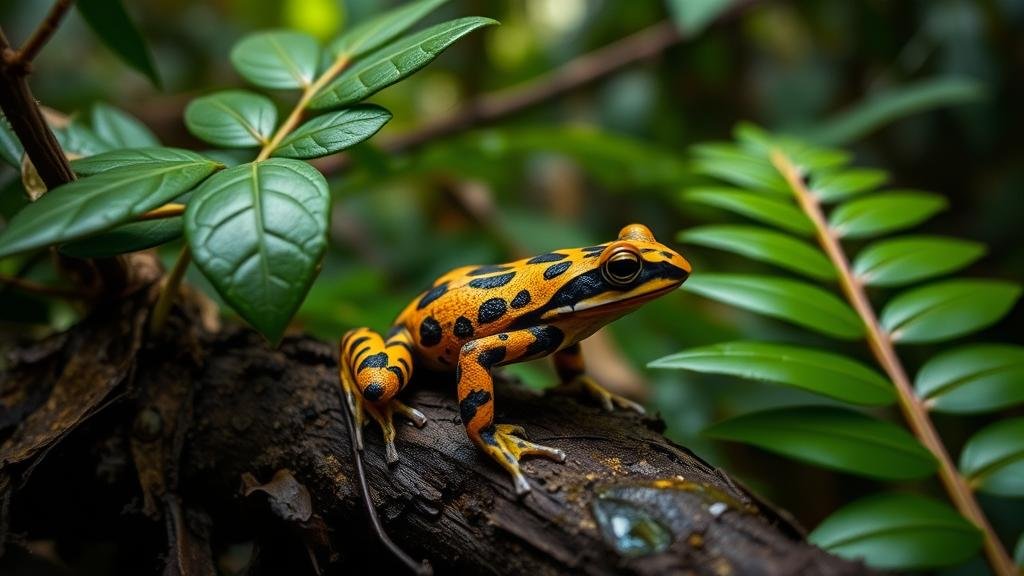Searching for the golden poison frog in the dense Chocó rainforests of Colombia.
Searching for the Golden Poison Frog in the Dense Chocó Rainforests of Colombia
The golden poison frog (Phyllobates terribilis) is one of the most fascinating and toxic creatures on the planet, found exclusively in the Chocó rainforests of Colombia. This vibrant amphibian, known for its striking yellow coloration, contains batrachotoxin, a potent neurotoxin that can be lethal even in small doses. This article explores the ecological, biological, and conservation aspects of searching for this elusive frog in its natural habitat.
Understanding the Golden Poison Frog
The golden poison frog is relatively small, measuring about 1.5 to 2 inches in length. Its bright coloration serves as a warning to potential predators. The toxicity of this frog is due to its diet in the wild, particularly its consumption of ants, which harbor the toxic compounds essential for the frog’s survival.
Habitat: The Chocó Rainforest
The Chocó rainforest, one of the world’s most biodiverse ecosystems, stretches along the Pacific coast of Colombia. Its unique climate, characterized by high humidity and dense vegetation, provides an ideal habitat for the golden poison frog. rainforest experiences an average annual rainfall of approximately 10,000 mm, creating a lush environment that supports a variety of wildlife.
The Importance of Exploration
Searching for the golden poison frog is not merely a quest for discovery; it is critical for conservation efforts. This amphibian is a key indicator of environmental health due to its sensitivity to habitat changes. The decline in its population can signal broader environmental issues, such as deforestation and climate change.
Challenges in the Field
Searching for these frogs poses various challenges, including:
- Dense Vegetation: The Chocó rainforest features thick underbrush and towering trees, making navigation difficult.
- Climate Conditions: High humidity and frequent rain can hinder both visibility and mobility.
- Local Biodiversity: The presence of other species with similar appearances can complicate identification.
Research and Conservation Efforts
Various organizations and researchers are dedicated to studying the golden poison frog and its habitat. Fundación ProAves, for example, focuses on conserving Colombias endangered species and their environments. Recent efforts have included:
- Field Surveys: Conducting repeated surveys to monitor population health.
- Habitat Protection: Establishing reserves to protect the frogs natural environment from deforestation.
- Public Awareness: Engaging local communities in conservation efforts to foster appreciation for biodiversity.
Real-World Applications of Research
The study of the golden poison frog has significant implications beyond ecology. The toxic compounds found in these frogs have garnered attention in pharmaceutical research for their potential applications in pain management and as a model for neurotoxicology. Understanding their unique biochemical capabilities may inspire new medications in the future.
Actionable Takeaways
If you’re interested in learning more about the golden poison frog or contributing to its preservation, consider the following actions:
- Support Conservation Organizations: Engage with or donate to groups like Fundación ProAves.
- Advocate for Sustainable Practices: Promote responsible tourism and ecological awareness.
- Educate Yourself and Others: Spread knowledge about the significance of biodiversity and the threats faced by unique species like the golden poison frog.
In summary, searching for the golden poison frog in the Chocó rainforests offers a unique opportunity to engage with one of natures most extraordinary species. Through dedicated research and conservation efforts, we can help preserve this amphibian and its rich, biodiverse habitat for generations to come.



